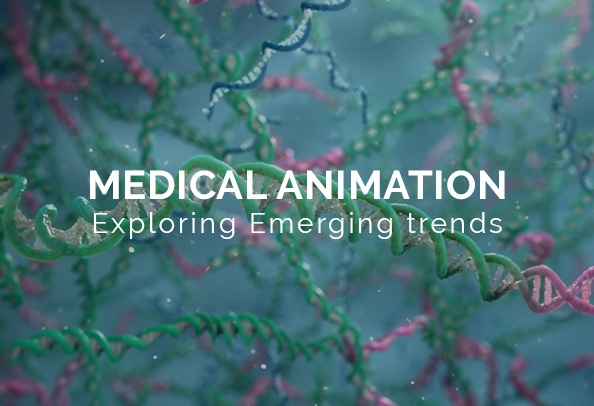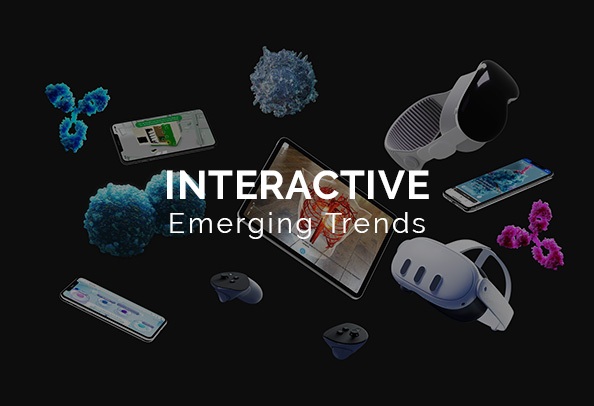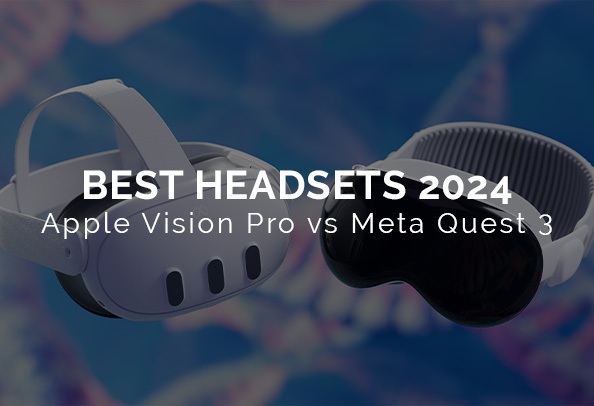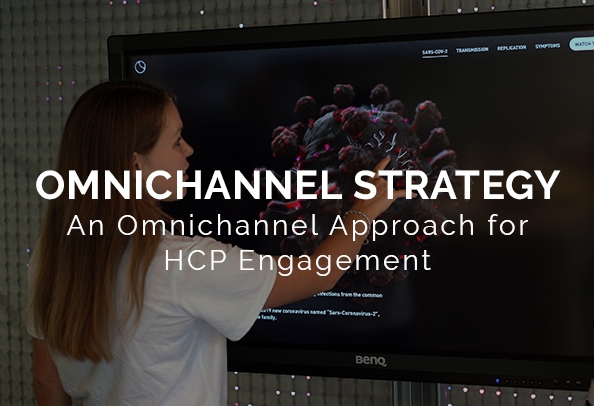What Are Drug MoA Animations & Why Are They So Important?
What Are Drug MoA Animations?
Medical animations that illustrate how a drug works within the body are a valuable tool for pharma, biotech, and medical companies. This kind of animation is called a MoA animation – where MoA can stand for Mechanism of Action or Mode of Action. Mechanism of action refers to the specific targets that a drug binds to in order to trigger molecular changes. Mode of action, on the other hand, refers more generally to the physiological impact of a drug on the body. Either type of MoA animation are sought after in the pharmaceutical industry as a visual aid for internal and external training for a variety of audiences, investor relations, and marketing endeavors at product launch.
What Is the Difference Between an MoA and MoD Animation?
MoA and MoD are two common industry terms used to describe pharmacology animations. MoD stands for mechanism of disease and describes animations that focus on the physiological changes that occur from a healthy state to a diseased state. MoD animations are educational and often serve to enhance disease awareness and education for healthcare professionals (HCPs) and patients. They can be developed independently to strengthen the understanding of specific pipeline therapeutic targets. They can also be incorporated into MoA animations. By explaining the pathophysiology across various indications, the mechanism of disease sets the stage to explain how a drug interrupts the disease process, restoring a healthy state.


Why Are Drug MoA Animations Effective Communication Tools?
Animation is the best way to visualize drug activity at the molecular level, as the combination of stunning 3D graphics and scientifically accurate storytelling brings these microscopic events to life. Pharmaceutical presentations often focus on techniques and data, restricting the audience to only those fluent in high science. 3D medical animations, on the other hand, show rather than tell your audience how a drug works. By combining visuals, motion, and narration, animations provide a clear understanding of a drug mechanism of action, that would otherwise be challenging to understand through static images or descriptions alone. Animation is an accessible and inclusive way to engage a wider audience, while inducing a stronger connection to the scientific material you wish to convey. This storytelling approach is therefore the most effective at leaving a lasting impression on how your drug can address unmet medical needs.
Crafting a compelling drug MoA animation requires the expertise of a specialist team that understands science and storytelling, such as that of our in-house PhD scientists. At Random42, many of our animations unfold in three acts, following a structured narrative that conveys the complex science and data in an easy-to-follow format. The normal function of the organ, cell, or protein is introduced, setting the stage for an explanation of the disease and unmet need. If you want to reach a variety of stakeholders in the therapeutic area, this context is key to informing your audience why they should be interested in your drug. The viewer is then taken on a journey through the body following the drug’s effect on particular organs, onwards to the cellular level and finally to the intracellular level.

Ultimately, the value of a pharmacology MoA animation lies in its ability to enhance understanding of the science behind a drug. Our specialist team, consisting of PhD-qualified scientists and experienced 3D animators, collaborate with your team of industry experts to ensure the accuracy of the video. Whether the exact MoA is known, or whether research is still in progress, the scientific integrity of the animation will be ensured. The content and voiceover can be updated or amended, evolving alongside the research, as more knowledge of the mechanism is revealed, or as the product moves further along the pipeline.
How Drug MoA Animations Contribute to the Success of a Drug Candidate
Mechanism of action animations foster a deeper understanding and appreciation of a drug’s potential in treating a disease, driving its progress through the development pipeline.
In the early stages of the clinical development lifecycle, MoA animations are critical in demonstrating the value of a drug to investors, collaborators, and regulatory authorities. An in-depth understanding of how your drug works in the body and establishing the unmet need is the foundation for building trust with key stakeholders and investors. By illustrating the mechanism by which the molecule acts, you are validating your research and development process. Comprehension of the science behind your drug candidate inspires confidence in its potential to reach the market.
The adaptability of MoA animations is advantageous. A single MoA can be broken down into digestible chapters. Besides the aesthetic advantage that a video brings to a presentation slide deck, imagery and other digital assets can be leveraged from the animation to drive home your key messaging and create a consistent identity throughout your materials. Further down the line, a similar approach can be taken by corporate communication teams at conferences and events.

Drug MoA animations also benefit healthcare professionals, allowing them to stay updated with the latest treatment options. According to an industry review, striving for prescriber satisfaction is essential to expand the distribution of your drug post-launch. A study that investigated the importance of prescriber experience in pharma launches indicated that tailoring campaigns to prescribers increases their satisfaction and likeliness to prescribe the drug. Sales representatives often leverage MoA animations to target healthcare professionals (HCPs). Using a video allows HCPs to grasp the main concepts within minutes, allowing them to better navigate and engage with the rest of the data presented. Overall, this deeper understanding of a drug mechanism enables them to make informed decisions when prescribing, administering, or advising patients about medication. Similarly, such educational tools can facilitate training for medical students, future industry experts.
MoA videos also play a crucial role in patient education and empowerment. Patients can gain insights into the mechanisms underlying their treatment, and the benefits it has compared to others. Drug MoA animations can also help dispel any misconceptions or fears patients may have about their medications. In sum, a couple of minutes of animation has the capacity to address a patient’s clinical curiosities as well as their emotional needs, two critical aspects of the patient experience. Mechanism of action animations are an invaluable asset for product launch, as a first step to teaching patients about a drug, encouraging them to learn more. Greater patient insight into the pathophysiology of their disease and the mechanisms of potential treatment options can lead to changes in their chosen treatment plan.
Leveraging drug MoA animations to enhance HCP, prescriber, and patient experiences is critical in the current pharmaceutical market, as it is likely to determine the new drug’s performance in its first six months, which impacts its subsequent market share.

Aside from the value that mechanism of action animations bring to external communications, they are also being leveraged internally across all medical and pre-launch teams, who are increasingly reutilizing animation assets as an improved way of delivering internal training. Engaging, bite-sized videos have proven most effective in ensuring the uptake of key scientific messages, especially important for medical science liaisons (MSLs) and sales reps whose training time is often limited. Full-length MoA animations allow a company’s scientific story to be transformed into captivating digital content ensuring internal teams are well-versed in the science behind their portfolio, boosting overall awareness.
High-quality scientific animations can also be utilized in learning and development (L&D) programs by equipping teams with compelling content that can help develop the skills and knowledge that pharma workforces need, driving excellence, understanding, and professional growth. Animation content can be further leveraged into interactive, immersive content such as quizzes, games, and augmented/virtual reality experiences to keep users interested and focused, enhancing learner engagement.

Who Can Use a Drug MoA?
- Healthcare professionals and medical students – An MoA animation increases the understanding of how a drug can be an effective treatment for different indications.
- Patients – MoA animations aid patient understanding of a treatment, allowing them to make informed medical decisions.
- Investors – Animation provides a valuable tool for presenting the mechanism of action of a potential drug candidate to stakeholders, collaborators, and regulatory authorities.
- Sales representatives in the field – MoA animations are a digital training tool that reinforces key scientific content and boosts sales.
- Marketing teams – Animations are eye-catching tools that can be adapted to different platforms such as websites and social media. Integrating a drug MoA video into your digital presence is sure to promote brand awareness and stakeholder engagement.
- Corporate communications teams – Animation assets can be adapted to create engaging content for conferences, events, and press releases when key findings are made.
- Medical affairs teams – Animation content can be utilized for disease state awareness on digital channels as well as in-person events.

How to Make the Most of Your Drug MoA Animation
The adaptability of MoA animations makes them a powerful tool for pharma and biotech companies. Through alternative voiceovers or simple edits, an animation can be tailored to a range of audiences. A high-science voiceover can be used by healthcare professionals, and a simplified version with lay language can be used to educate a non-specialist audience. Stills and short clips from the medical animation can be leveraged across websites, slide-kits, social media and more.

How Can Random42 Help You?
As companies navigate the complex landscape of drug development, harnessing the power of digital assets offers a distinct competitive advantage. At Random42, we have the capabilities to take this one step further with interactive features. Our interactive team can repurpose assets and visuals from the animation, and develop a virtual reality or augmented reality experience. These immersive experiences allow you to unlock the full potential of your drug MoA animation, and stand out from competitors.
If you are looking to create an impactful and easy-to-digest mechanism of action animation, our expert team can support your needs and bring your product to life. Random42 can produce engaging, purposeful animations that can equip your team with a powerful digital asset that will enable you to captivate your audience and disseminate your research.
Get in touch with our expert team for a consultation to explore your approach to engaging scientific communication.
Are you interested in seeing how medical animation can help you?
Related news

Emerging Trends in Medical Animation

Emerging Interactive Trends

Best Headsets of 2024


